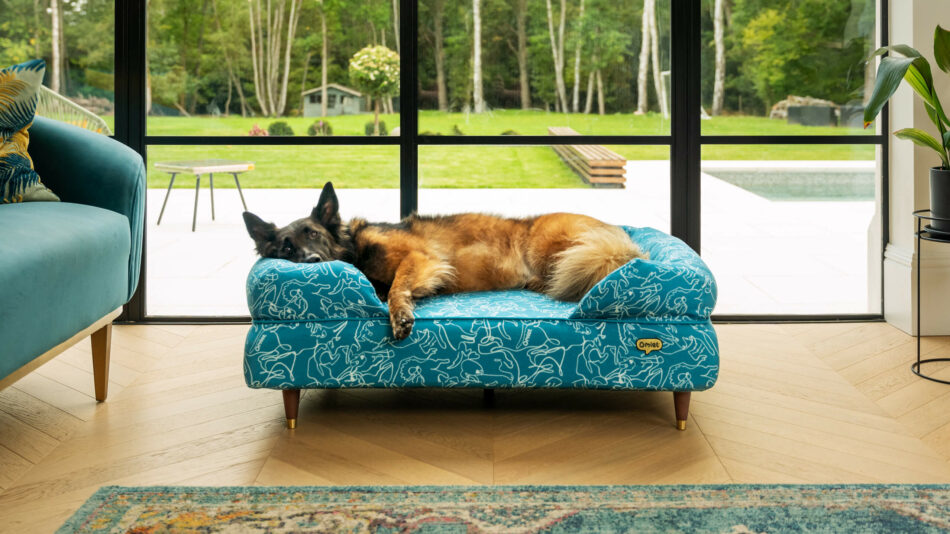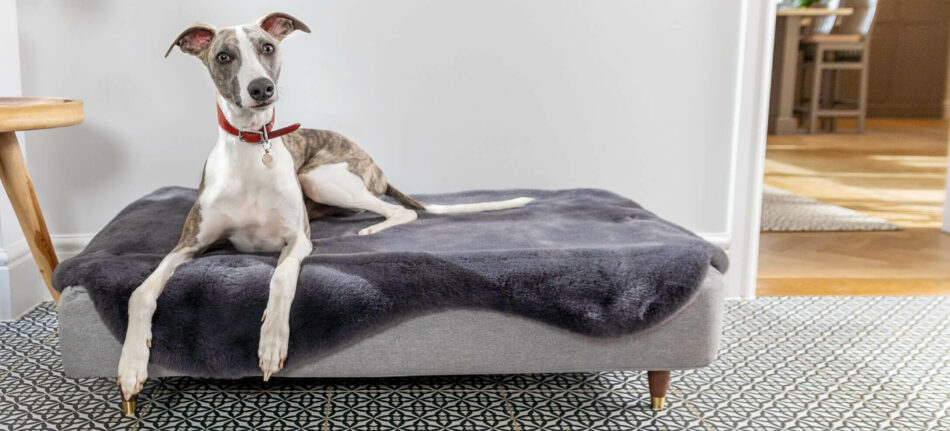Dogs and separation anxiety
Canines may be our constant companions, but even the most devoted dog owner can’t be home around the clock. For some dogs, this time apart is more than a mild inconvenience, it’s a source of genuine distress. Dogs and separation anxiety is a very real thing, and knowing what you can do to help your canine cope can make all the difference.
What separation anxiety is (and isn’t)
Separation anxiety is a condition where a dog experiences overwhelming stress when left alone. It’s important to distinguish the signs of separation anxiety in dogs from simple boredom or mischief. A bored dog may chew a shoe or dig in the yard, but dogs with separation anxiety react out of panic, often causing more damage to your home or themselves. Here’s how to tell if your dog is suffering from separation anxiety.
Signs and symptoms of separation anxiety
Not every dog shows their distress in the same way, but common indicators include:
- Vocalisation: Excessive barking, howling, or whining that starts soon after you leave them alone.
- Destructive behaviours: Chewing furniture, scratching at doors, or damaging windows.
- House soiling: Accidents indoors, even if your dog is potty trained.
- Physical stress signals: Pacing, drooling, panting, or trembling when you’re getting ready to leave.
- Escape attempts: Trying to dig or push their way through doors or windows.
These behaviours aren’t merely a dog “acting out.” They’re serious symptoms of a dog who’s genuinely struggling. And if left unchecked, many of these behaviours can cause physical harm to your pup.
Common causes of separation anxiety
Separation anxiety in dogs doesn’t have one singular cause. Instead, it often develops from a combination of experiences and temperament. Changes in routine, past trauma, or lack of independence training are some of the most common factors. A new job or schedule, dogs that have been previously abandoned or in neglectful situations, and puppies that haven’t been taught to spend time alone can cause dogs to be anxious when left alone. And, dogs that have bonded extremely closely with one human are also more prone to experience separation anxiety, even when their other family members are home.
Supporting a dog with separation anxiety
Dogs with separation anxiety can improve with training and patience. It’s important to make changes slowly and confidently, sticking to new training and routines as closely as possible to avoid further stress. You should always have a safe space for your dog in your home, both for these training sessions and for your absences, so they don’t hurt themselves. Try these different ways to build confidence in your dog and to create a more peaceful environment for them.
Create a calm environment
A safe, secure space can go a long way in reducing stress, as well as keeping your dog from hurting themselves or damaging your home. Crates and pens are the most common and convenient options, and create a den-like environment that speaks to your dog’s nature. If your dog panics when they’re enclosed, you’ll need to work up to keeping them in this space through crate training.
Comfort items like a favourite blanket, a t-shirt their favourite human has worn, or a favourite toy can provide reassurance. But, if your dog is chewing while you’re away, keep crate and pen items to a minimum to avoid accidental choking or swallowing foreign bodies. Dogs that are displaying more mild signs of separation anxiety can benefit from an anxiety dog bed in an area of your home.
Background noise like soft music or a radio can help mask outside sounds. A fan, white noise, or other soothing sound may also help. Just make sure all cords and appliances are safely out of your dog’s reach.
Gradual desensitization
Once you have a safe space for your dog, building tolerance slowly helps them deal with separation anxiety on a psychological level:
- Start with very short absences, like stepping into another room. You can briefly close the door, or tell your dog to “stay”, or put them in their kennel for these quick moments.
- Increase durations gradually, pairing departures with something like a treat or a toy. Offer the same item each time you leave, and only when your dog is in their kennel.
- Keep sessions calm, and avoid long, drawn-out goodbyes and excited reunions. Making a big deal about leaving will make your dog’s apprehension grow, and over-the-top greetings make your homecoming a much more anticipated event.
Over time, your dog will learn that being alone isn’t dangerous. It can help to use a home security camera or baby monitor that connects to WiFi for you to check in on your dog while you’re away. Avoid trying to talk to your dog through the camera or a home speaker, as it can stress them further. But having an extra set of “eyes” on them while you’re gone can give you peace of mind.
When more support may be needed
If these measures don’t help, some dogs may need professional training sessions in other areas of their life. Some dogs may even benefit from medications or supplements from your veterinarian. If your dog is damaging their teeth or paws during their frantic escape attempts, or are ingesting pieces of furniture or toys, more urgent measures should be taken.
Myths about separation anxiety
There are several misconceptions about separation anxiety in dogs. This very real condition differs from just normal nervousness or quirks. Here are some of the most common myths about separation anxiety in dogs:
Myth: My dog is just naughty.
Fact: Destructive behaviour linked to separation anxiety is a stress response, not mischief. Punishment only increases fear in your dog and exacerbates the issue.
Myth: They’ll grow out of it.
Fact: Not necessarily. In fact, most cases of separation anxiety are seen in adult dogs, and onset can occur at any point in a dog’s life. Without support, separation anxiety often persists or worsens over time, so early intervention is key.
Myth: Getting another dog will solve it.
Fact: While dogs are social animals, separation anxiety usually stems from attachment to their human(s). Adding another dog may provide companionship, but it won’t automatically resolve the issue.
Myth: Separation anxiety is rare.
Fact: Separation anxiety is one of the most common behavioural challenges that dog owners face. Many dogs experience it to varying degrees, which is why awareness and proactive management are so important.
Omlet and your dog
Helping a dog with separation anxiety is all about balancing security, stimulation, and support. At Omlet, we’ve thoughtfully designed dog products that provide your pup with what they need to feel safe when they’re home alone. Our dog crates and dog beds offer ultimate comfort to create calm areas they can trust. Paired with training and patience, these tools help turn alone time from panicked to peaceful.
This entry was posted in Dogs


